7 Nights Split Yacht Charter Itinerary
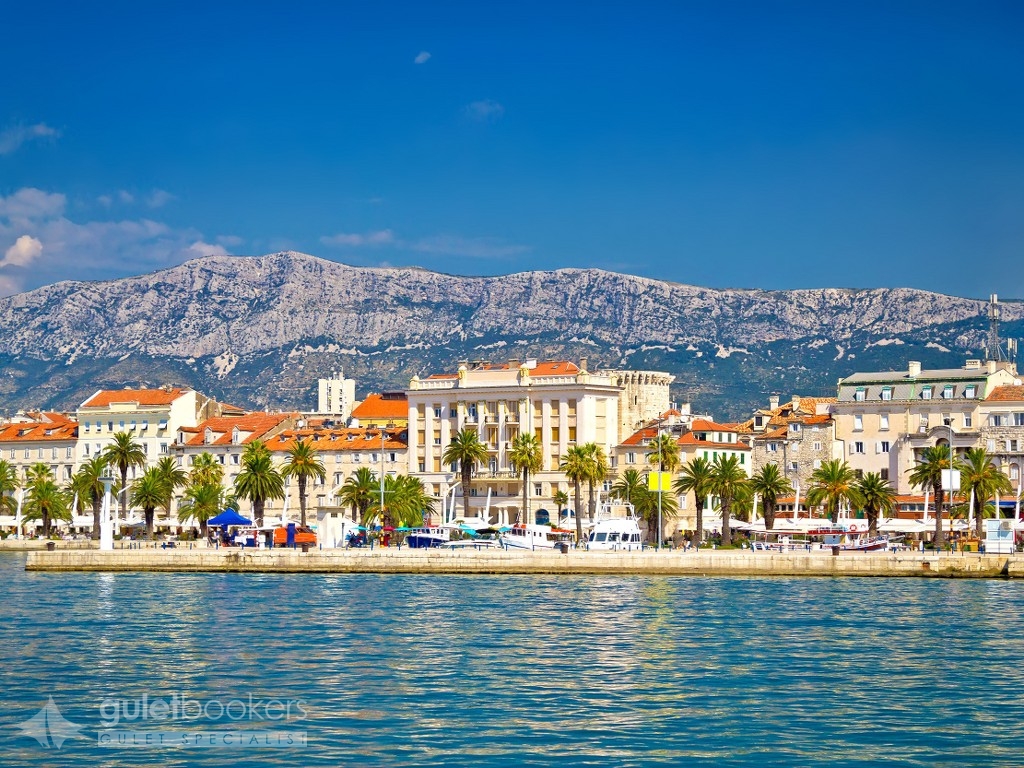
When, in the year 305 the Roman Emperor Diocletian, who ruled the entire world at that time, decided to build his leisure time abode – in which he intended to spend the rest of his life – he had no doubt as to exactly where build to it. In the very heart of Dalmatia, in the bay of Aspalathos (Split), well protected from the sea by the islands of the Split archipelago, and defended on its landward side by high mountains, Diocletian created a special point on the map of the Adriatic: the future city of Split. Awash in the warm charm of the Mediterranean, Split is a city with rich history, not only within the walls of its museums, palaces and churches, but in the city itself. Its heritage speaks loudest and has done so since the times of Antiquity, on the Peristyle and from its stone houses, while the true Mediterranean spirit lives in the vibrant cellars, in the murmur at street corners, in the squares and alleyways and in the beauty of the waterfront. If you follow the weave of these white, stone-paved streets to the edge of the sea which gently rocks the moored boats, you will discover a city in which the famous Roman emperor left the imperial mark of his presence on every corner, together with the saint he decided to execute. Unique heart of Split has rightly been declared a monument of zero category and is included in the UNESCO World Heritage List.
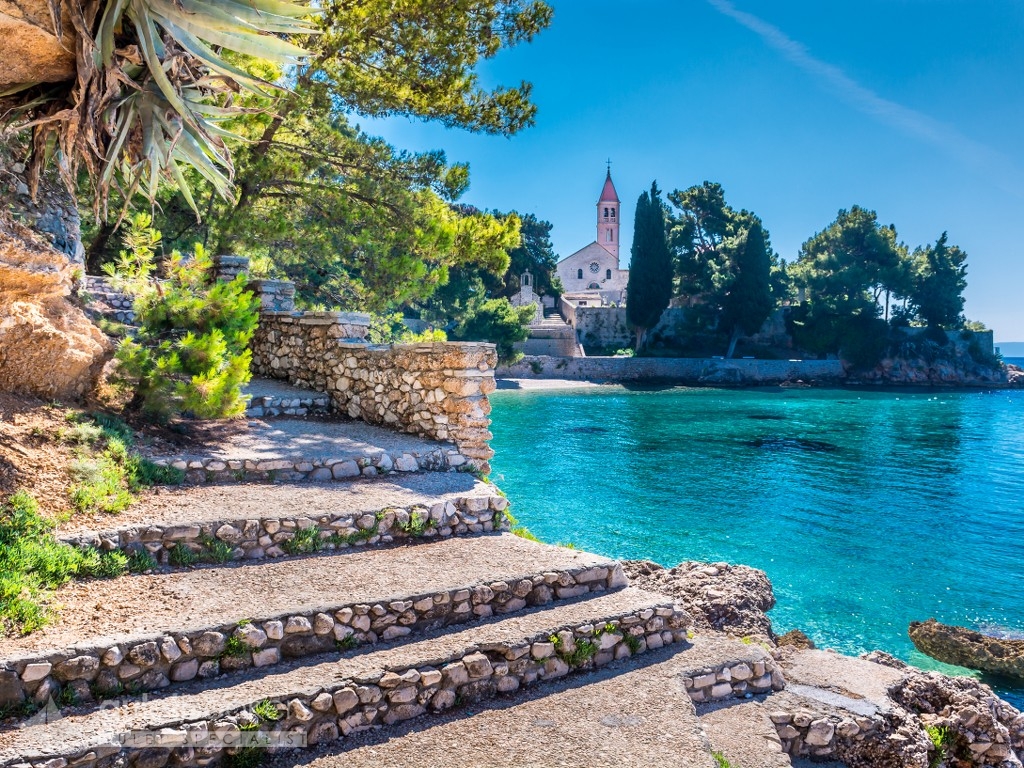
The largest of the islands of the Split archipelago is Brac, known worldwide as the island of stone and wind. Island of stone, because the finest quality stone has been quarried here for centuries by the highly skilled and hard working local stone masons. It has been used to build not only the local cathedrals and other grand edifices, but also a number of other prestigious buildings. Brac is also known as the island of wind. Nowhere else in the Adriatic, surfers tell us, does such a magnificent landward breeze blow as in the channel between Brac and Hvar, particularly at the beach known as Zlatni rat, whose shape actually changes depending on the direction of the wind and waves.
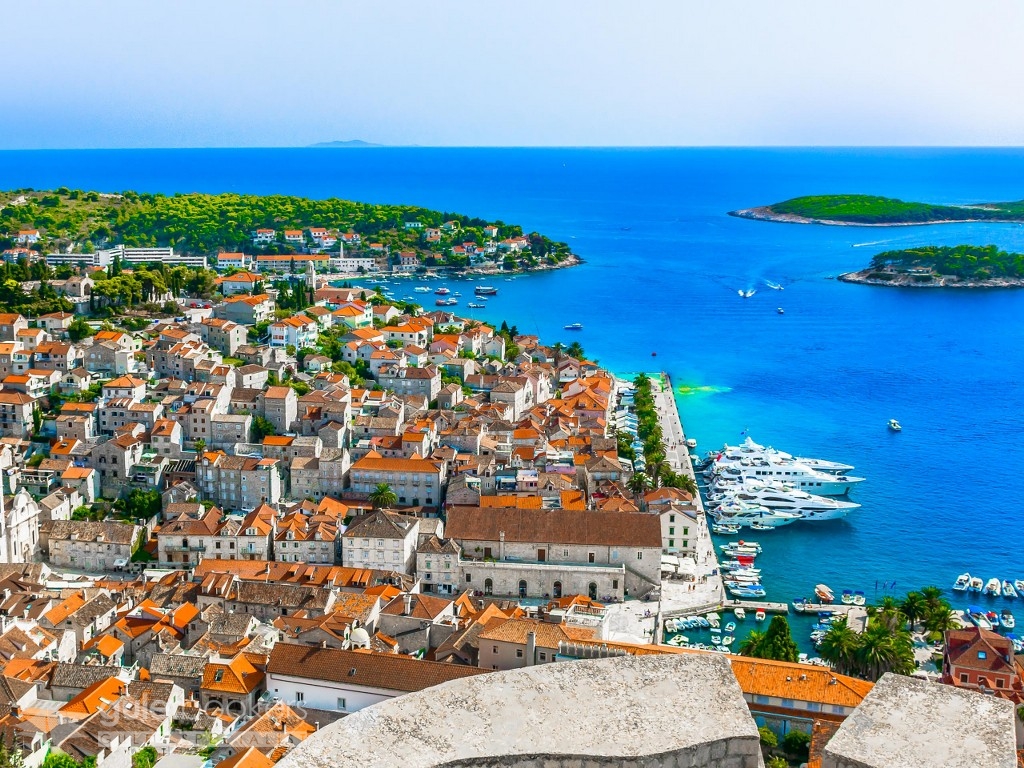
Mother Nature has indeed been generous to Central Dalmatia, bequeathing to it a coastline and long pebble beaches shaded by fragrant pine trees and adorning its sea with the beauty of a string of islands of exquisite beauty. Immediately above the beaches of the famous Makarska Riviera is the Biokovo massif, still the habitat of the chamois. Here you can enjoy the rising of the summer sun, with a view that extends all the way to the outermost islands in the open waters of the Adriatic. Having been recently placed on the list of the ten most beautiful islands, sunny Hvar is, without competition, numbered among the most seductive of Dalmatian islands. Boasting the largest island town square on both sides of the Adriatic, one of the first communal theatres in Europe, built in long gone 1612, the Arsenal, the famous “Tvrdalj” Palace of Petar Hektorovic, and stone-paved, narrow streets, worn smooth and glisteningin the sun, it is difficult to decide whether Hvar captivates more with the harmony of its history and art, or with the beauty of its nature, enhanced with the intoxicating fragrance of lavender.
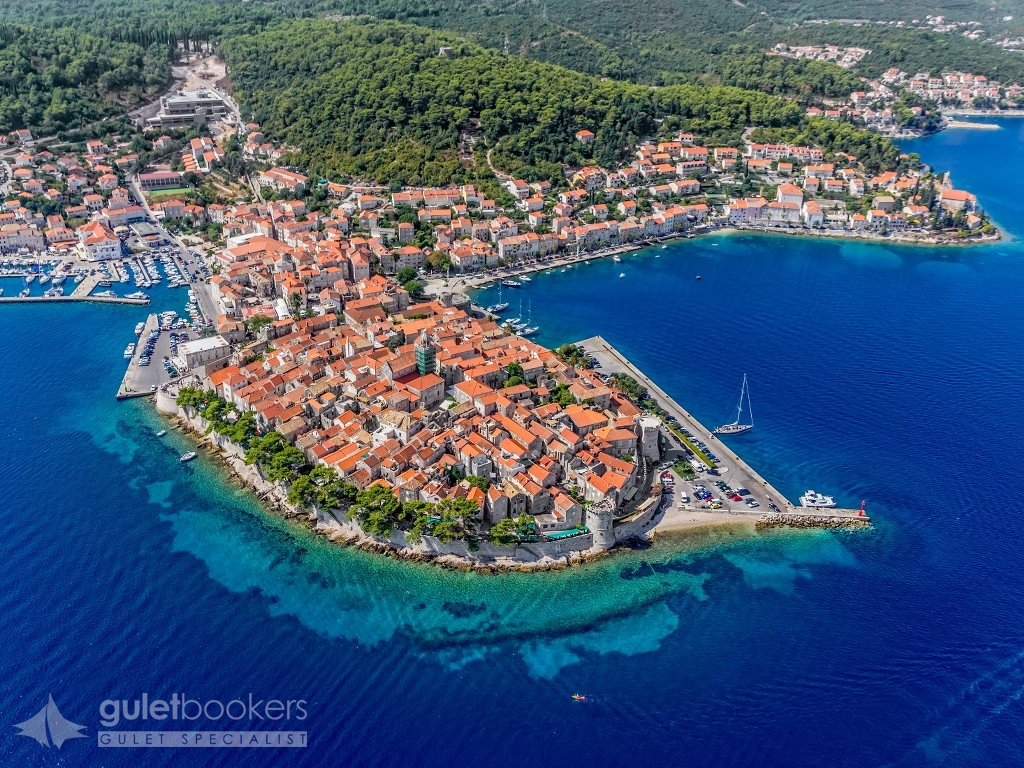
About the time that Marco Polo set sail for terra incognita, his hometown began to develop into a kind of urban sculpture built of stone with regular lines. That sculpture remains well preserved to this day. The streets of Korcula were carefully laid out by a local builder who was also an ingenious town planner. The streets are based on a fishbone pattern and are a true blessing in the summer. Although they bask in the golden glow of the sun both morning and afternoon, the heat of the midday sun is directed around them. If you want to experience the atmosphere of Korcula, may the good winds bring you here in July, when the city plays host to the International Festival of Song and Wine, celebrating the famous traveller, the Festival of Chivalry and the traditional sword dances performed in original costumes dating from the 16th century. The dances depict the struggle between the white king and the black king.
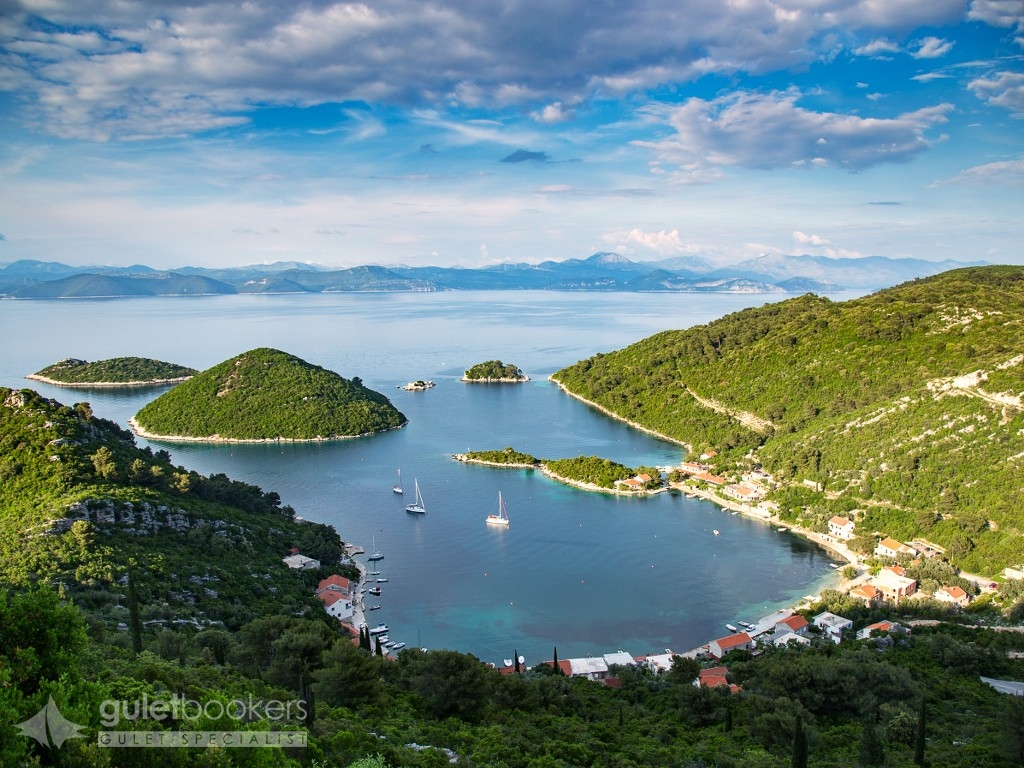
Situated on the island of the same name, Mljet National Park is the most important protected area of south Dalmatia. It includes the western wooded part of the island of Mljet, which is significant for its extremely rich Mediterranean vegetation and cultural heritage. The park is famous for two deep bays which, due to their extremely narrow links with the sea, are regarded as and indeed named as such: the Great Lake and the Small Lake.
The Mljet National Park, the green beauty covered with thick pine forests with numerous well-protected coves on the northern coast of the island of which some such as Prozura are reminiscent of ponds. Due to frequent attacks by pirates throughout history Mljet is unique amongst the inhabited Croatian islands as it has no developed little towns on its coast, which in no way detracts from its charm. Besides a visit to the national park you can also enjoy the sandy beaches in the southern part of the island and the unbelievably beautiful coves on its south-west coast
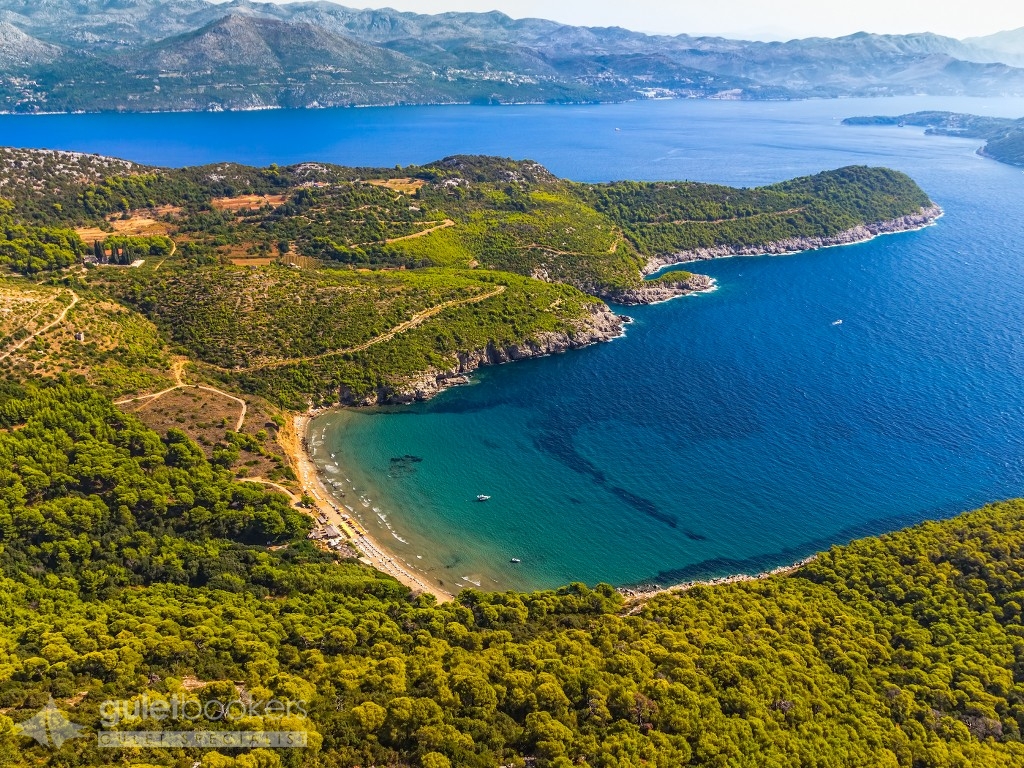
The magical Elaphite islands – Sipan, Lopud and Kolocep, scattered like pearls in the azure of the sea. Named Elaphite islands after the Latin word Elaphos for deer, this archipelago, which used to be the habitat of this noble wild game, concentrates all the qualities of the untouched Mediterranean, featuring subtropical vegetation, expansive pine tree forests and olive groves, all surrounded by amazing sandy beaches.
The Islands gravitates towards Dubrovnik with several excellent anchoring and mooring sites, such as Sipan with a great culinary choice, as well as one unique quality – it is the island with the largest number of olive trees per square metre and lush vegetation thanks to the sources of water on the island.

“Those who seek paradise on Earth must come to Dubrovnik”, So wrote George Bernard Shaw, smitten by the beauty of the city whose untouched, 1940 m long defensive walls – today under the protection of UNESCO – girdle in a city which carries the appellation of the Pearl of the Adriatic. Sitting at the southernmost part of Croatia, harbouring centuries of heritage created by the noble skills of the finest builders and artists, Dubrovnik basks in a warm Mediterranean climate with groves of lemon, orange and tangerine trees, sumptuous palms and agaves, adorned by Renaissance parks and the flowering gardens of medieval stone palaces and unobtrusive monasteries.
Send Enquiry Split – Dubrovnik – 7 Night Gulet Cruise
This itinerary is only bookable for private charters. If you are interested in a cabin charter, please contact us for more information.
Guletbookers is the independent gulet charter company located in Bodrum - Turkey and dedicated to giving you
the best gulet charter possible from the widest choice of gulets possible.
Get in touch via WhatsApp for Seamless Communication.
Talk to our experts and browse through more yachts.







